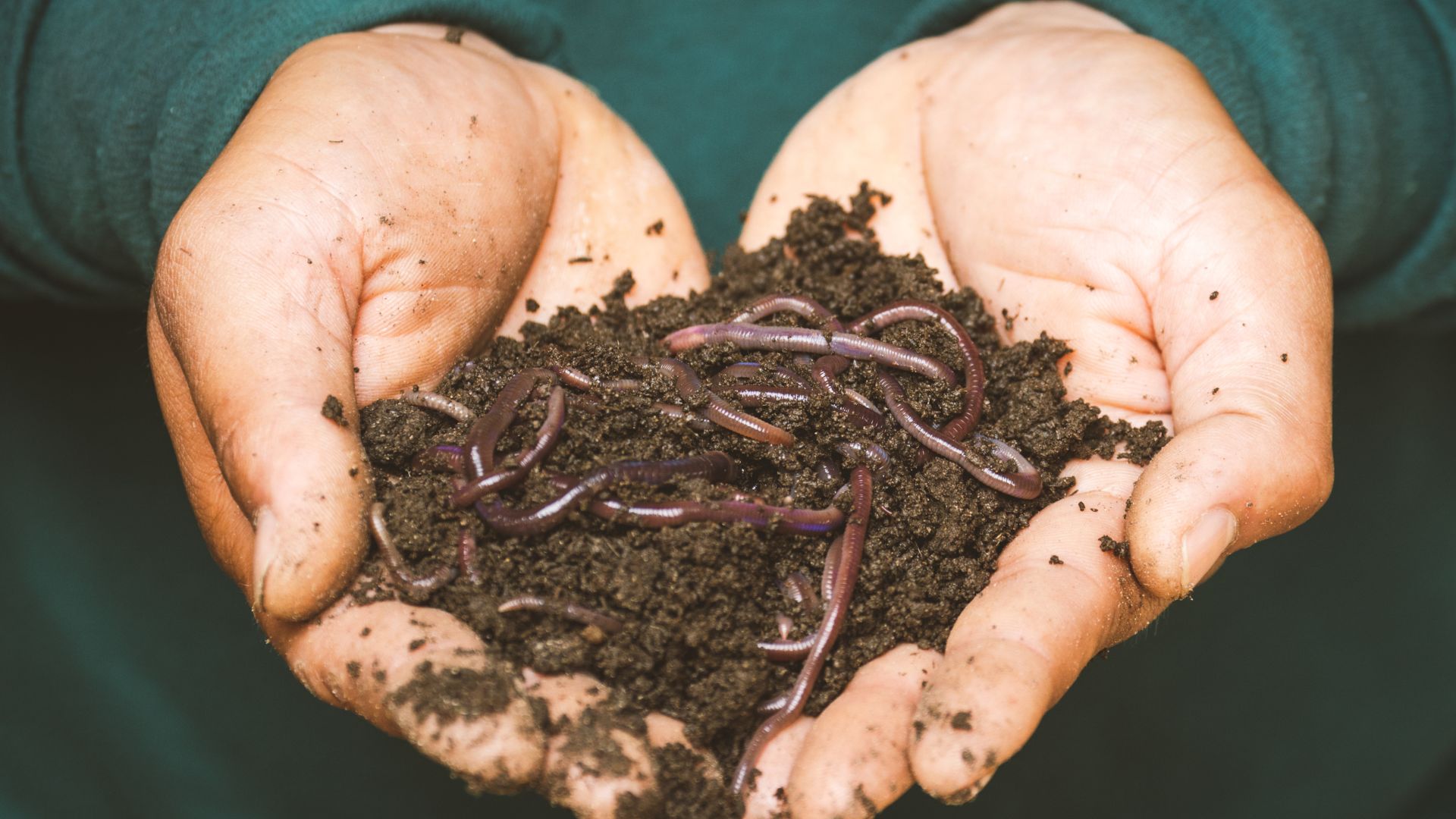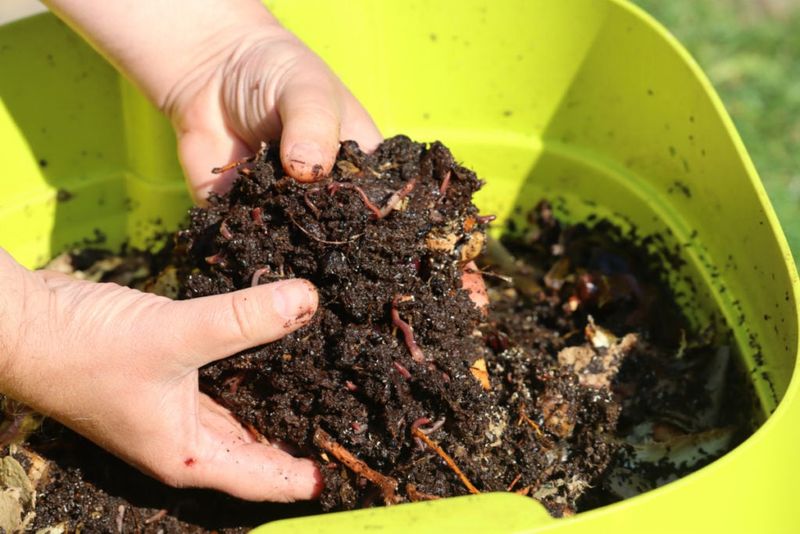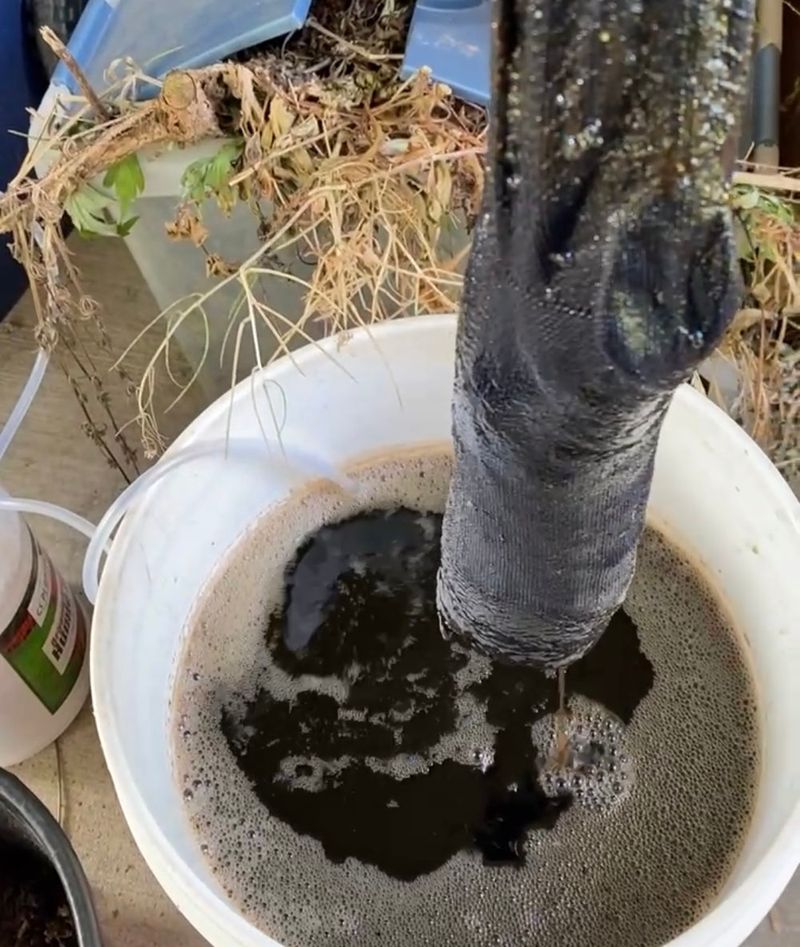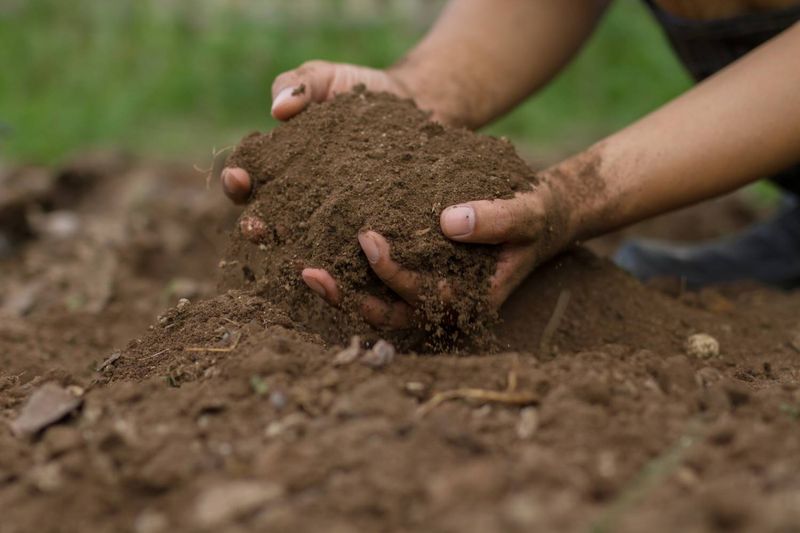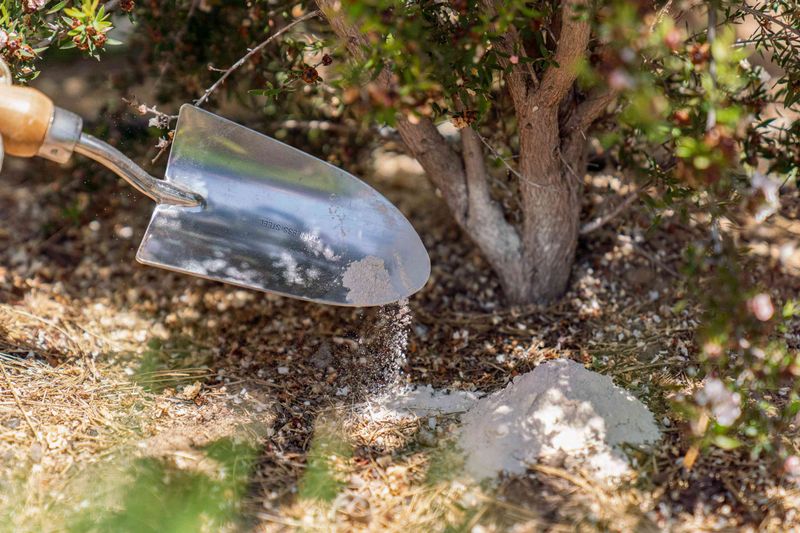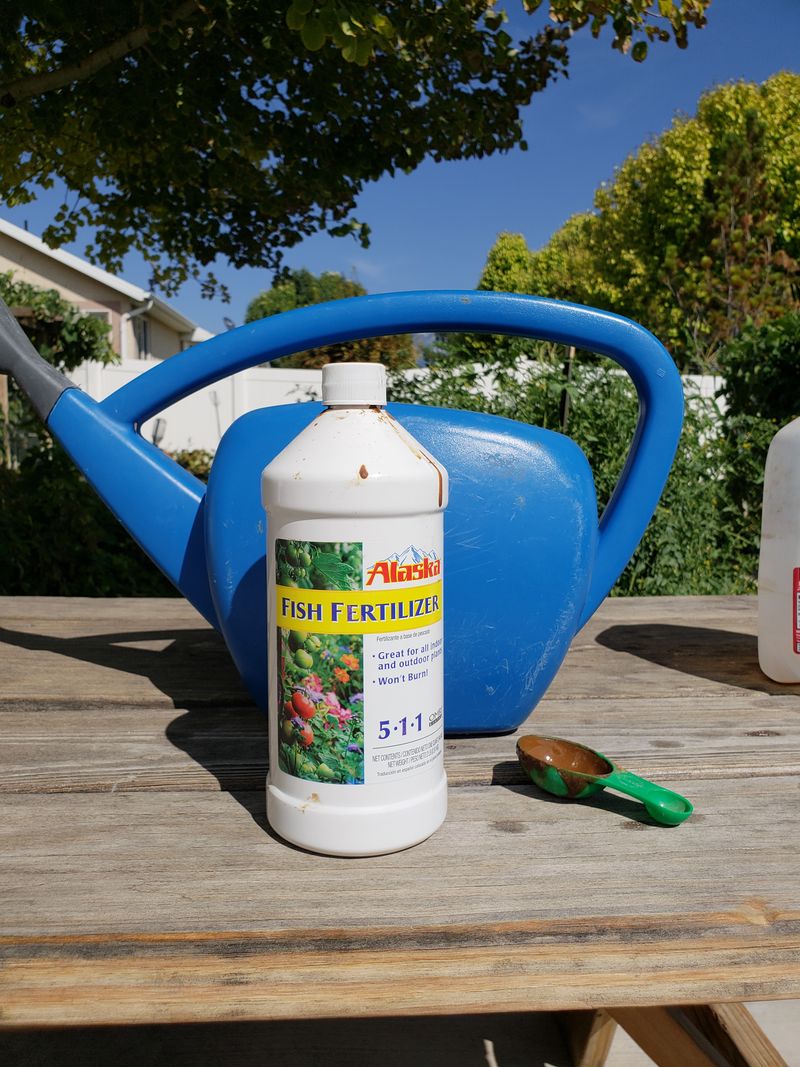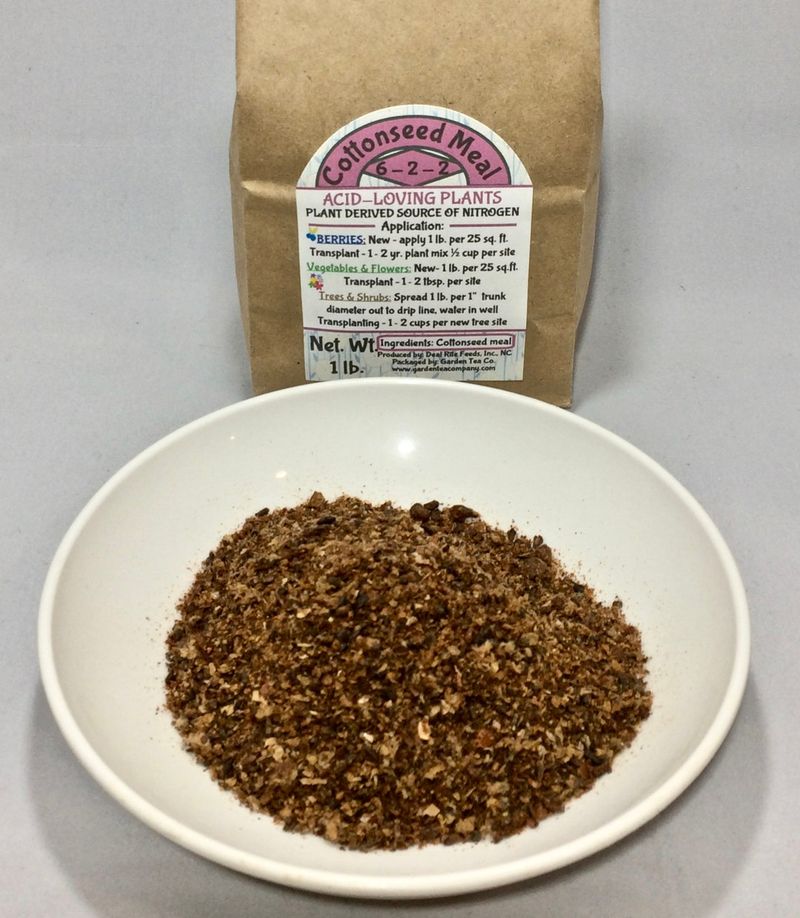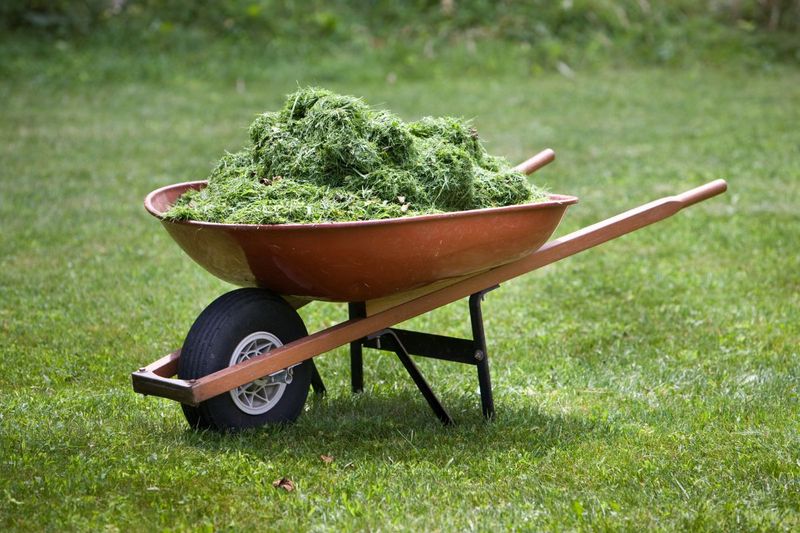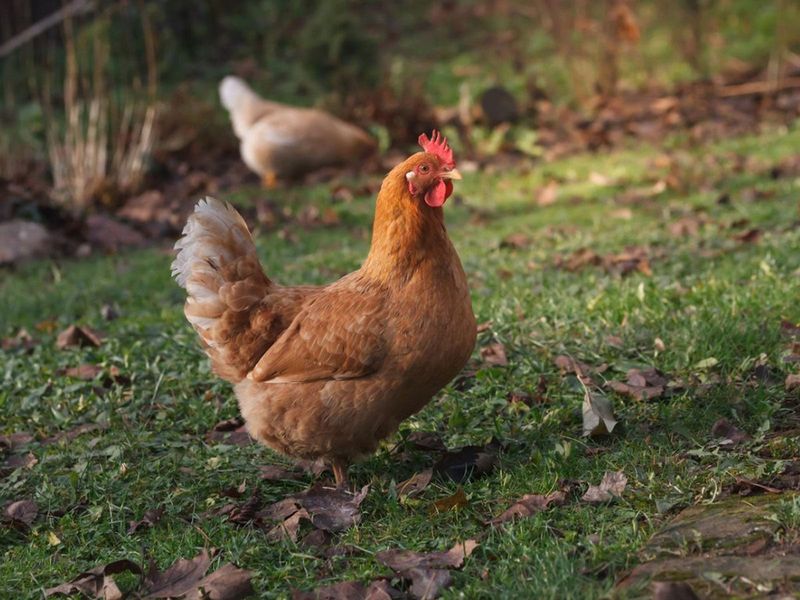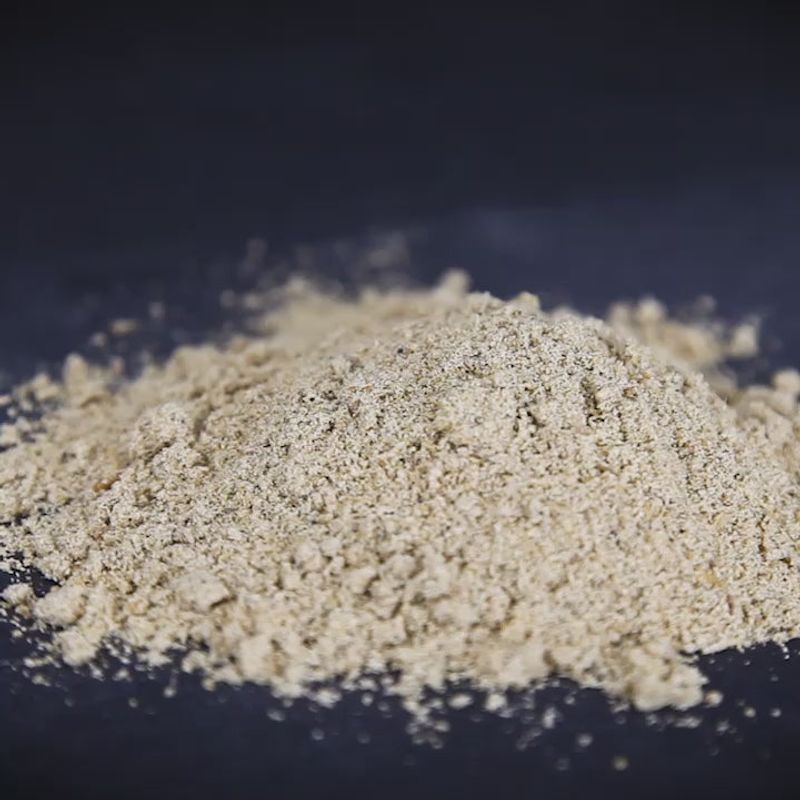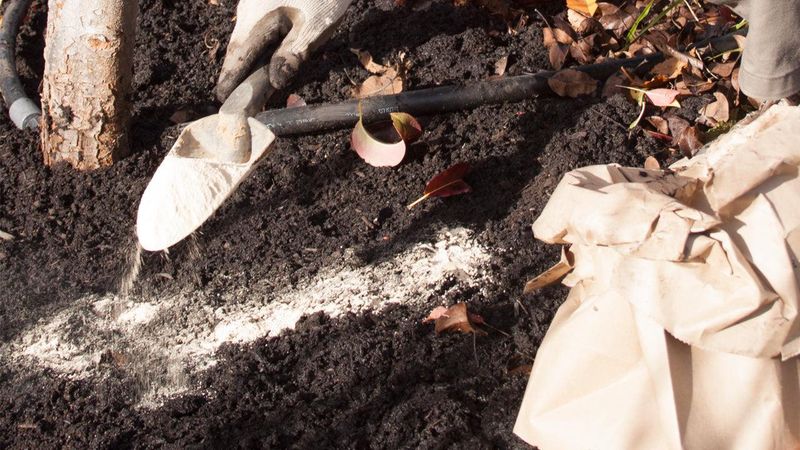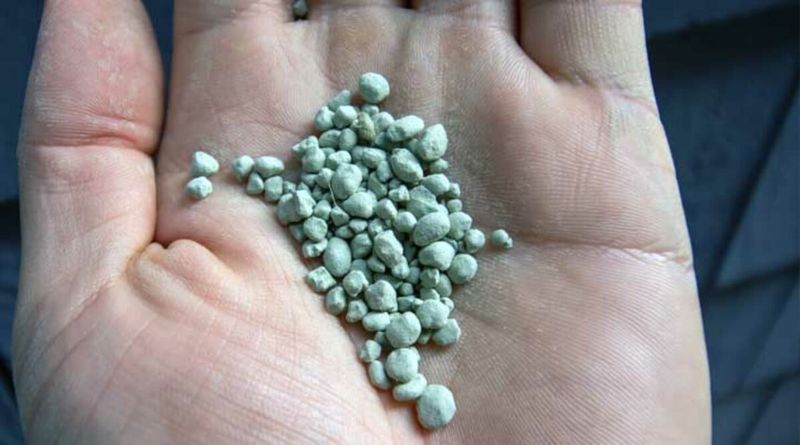Spring always feels like a fresh start, and it’s the best time to give your garden and lawn a little extra love. I’ve found that using organic fertilizers not only gets plants growing strong, but it also makes the soil healthier year after year.
Unlike synthetic stuff that just feeds the plants, organic options actually nourish the whole ecosystem. It’s like giving your garden a balanced meal instead of fast food—and the results really show.
Whether you’ve been gardening for decades or are just digging in for the first time, these natural fertilizers are simple, safe, and seriously effective. Your plants (and your soil) will thank you.
1. Composted Manure
Nothing beats composted manure for giving plants a balanced meal of nutrients. When properly aged, it loses that strong barnyard smell while retaining all the good stuff your soil craves.
I’ve used cow manure on my vegetable beds for years, and the difference is remarkable – plants grow stronger and produce more. The slow-release nature means one application in early spring often lasts the whole season.
Just make sure what you’re buying is fully composted – fresh manure can burn plant roots and harbor pathogens. Spread it 1-2 inches thick and work it into the top few inches of soil before planting.
2. Worm Castings
Gardeners often call worm castings “black gold” for good reason. These tiny waste pellets from earthworms pack incredible nutrient density and beneficial microbes that improve soil structure immediately.
Unlike stronger fertilizers, you can’t overdo it with castings – they won’t burn plants even when used generously. My houseplants perked up within days after I top-dressed them with a thin layer last spring. The magic of worm castings lies in their ability to help plants absorb nutrients more efficiently.
They’re relatively pricey compared to other options, but using them as a concentrated amendment around seedlings stretches their value.
3. Compost Tea
Making compost tea transformed my gardening results last year. This liquid gold is created by steeping finished compost in water, creating a nutrient-rich brew that feeds plants both through roots and leaves.
The brewing process multiplies beneficial microorganisms that suppress disease and convert nutrients into plant-available forms. For best results, use it within hours of brewing while the microbial activity is at its peak.
A gallon waters about 20 square feet when applied to soil, or fills a standard sprayer for foliar feeding. My spring peas showed noticeable vigor after just two applications compared to untreated sections.
4. Blood Meal
Blood meal delivers an impressive nitrogen punch that jumpstarts spring growth like almost nothing else. Made from dried animal blood (usually from cattle processing), this powdery amendment works best when your plants need rapid greening and leaf development.
One spring I added blood meal to half my spinach bed as an experiment. The treated side grew twice as fast with noticeably deeper green leaves compared to the untreated section.
Use sparingly – about 1 pound per 100 square feet – as excess can burn plants and attract unwanted wildlife. The iron content also helps correct yellowing leaves, making it perfect for nitrogen-hungry spring vegetables like leafy greens.
5. Bone Meal
This one specializes in providing phosphorus – the nutrient responsible for robust root development and flower production. Made from ground animal bones, this powder slowly releases its nutrients over several months.
When planting spring bulbs last year, I added a tablespoon of bone meal to each planting hole. Those bulbs produced stronger stems and more vibrant flowers than areas where I’d forgotten to add it. The effect isn’t immediate like some fertilizers, so patience is required.
In acidic soils, bone meal works particularly well, while in alkaline conditions, the phosphorus can become less available to plants. A light watering after application helps start the breakdown process.
6. Fish Emulsion
Fish emulsion offers fast-acting nutrition that plants can absorb almost immediately. This liquid fertilizer, made from processed fish waste, delivers nitrogen, phosphorus, and potassium along with amino acids that conventional fertilizers lack.
The results speak for themselves – my vegetable seedlings always show remarkable growth spurts within days of application. The downside? Even deodorized versions have a distinct fishy smell that lingers for about 24 hours after application.
Dilution is critical – usually 1-2 tablespoons per gallon of water applied every 2-3 weeks during active growth. I’ve found early morning application minimizes odor issues and reduces the chance of leaf burn on sensitive plants.
7. Cottonseed Meal
This works wonders for acid-loving plants like azaleas, rhododendrons, and blueberries. This by-product of cotton processing provides a moderate nitrogen boost while gradually lowering soil pH.
Application timing matters – I spread it around my blueberry bushes about three weeks before they begin spring growth. This gives the meal time to start breaking down before the plants need the nutrients. The slow-release nature means one spring application often lasts the entire growing season.
Look for organic versions specifically, as conventional cottonseed may contain pesticide residues. Apply at a rate of about 3-4 pounds per 100 square feet, keeping the meal a few inches away from stems.
8. Grass Clippings
Free fertilizer might be hiding in plain sight on your lawn. Grass clippings from untreated lawns deliver an excellent source of nitrogen when used as mulch around garden plants or added to compost. Last spring, I stopped bagging my clippings and instead spread them in a thin layer around my squash plants.
The decomposing grass fed the plants while suppressing weeds and conserving moisture – a true multitasker in the garden. The key is using them in thin layers (1-2 inches max) to prevent matting and mold issues.
Fresh clippings break down quickly, releasing nitrogen within days, while partially dried clippings decompose more slowly and are less likely to clump together.
9. Chicken Manure Pellets
Chicken manure pellets take one of the hottest natural fertilizers and transform it into a convenient, less smelly form. The pelletizing process partially composts the manure, making its nutrients more immediately available while reducing burn risk.
My neighbor’s garden always outperformed mine until she shared her secret – chicken manure pellets worked into the soil two weeks before planting. Now I use them every spring as my garden’s primary nitrogen source. The pellets break down gradually with watering, releasing nutrients over 4-6 weeks.
The balanced nutrient profile works for almost everything in the garden, though I find flowering plants respond especially well. Apply about 5 pounds per 100 square feet for general garden use.
10. Feather Meal
This one might be the most overlooked organic nitrogen source available to home gardeners. Made from processed poultry feathers, this slow-release powerhouse contains up to 12% nitrogen that becomes available gradually as soil microbes break it down.
The slow-release nature makes it perfect for spring application on plants that need sustained feeding throughout the growing season. My corn patch showed remarkable improvement when I incorporated feather meal at planting time rather than using faster-acting amendments.
Unlike some nitrogen sources, feather meal won’t leach away with heavy spring rains. It works best when incorporated into the soil rather than left on the surface. The texture is somewhat dusty, so application on a still day prevents it from blowing around.
11. Rock Phosphate
Rock phosphate offers an extremely long-lasting phosphorus source that builds soil fertility over many seasons. This minimally processed rock dust releases its nutrients very gradually, making it ideal for establishing long-term garden beds in spring.
When I renovated my perennial border three years ago, I incorporated rock phosphate deeply into the soil. Those plants now consistently produce more flowers with stronger stems than my previously established beds.
The slow availability means it works best when combined with faster-acting amendments for the first season. Apply at about 10 pounds per 100 square feet when preparing new beds. Unlike bone meal, rock phosphate works effectively even in alkaline soils and won’t attract digging animals.
12. Greensand
Greensand brings a wealth of minerals and micronutrients collected from ancient sea beds to your spring garden. This blue-green material primarily provides potassium – the nutrient that helps plants withstand stress and develop strong stems.
After adding greensand to my sandy soil last spring, I noticed my plants handled dry spells much better than previous years. Beyond nutrients, it also improves soil structure, helping both clay soils drain and sandy soils retain moisture.
The effects aren’t immediate but build over time. Apply at about 5 pounds per 100 square feet when preparing beds. Some gardeners create a “greensand tea” by soaking it in water, though I prefer working the dry material into the soil where its benefits will last for several years.

